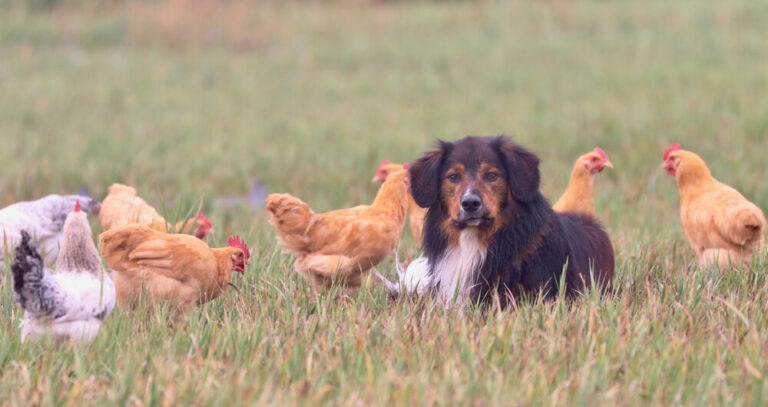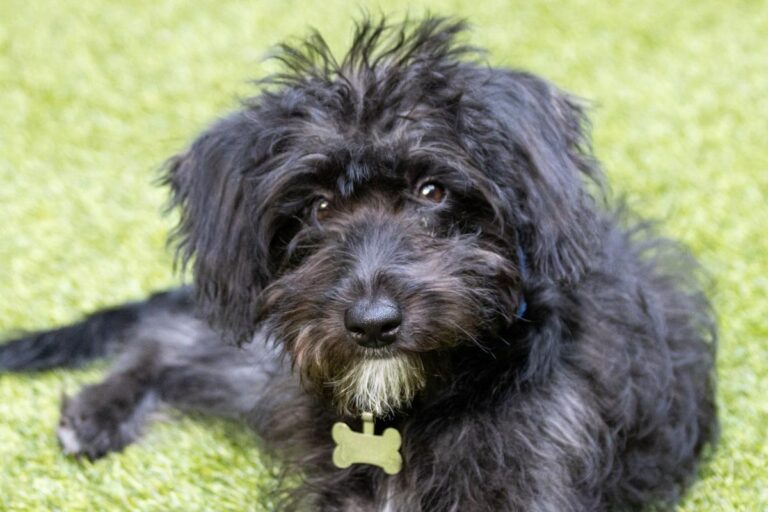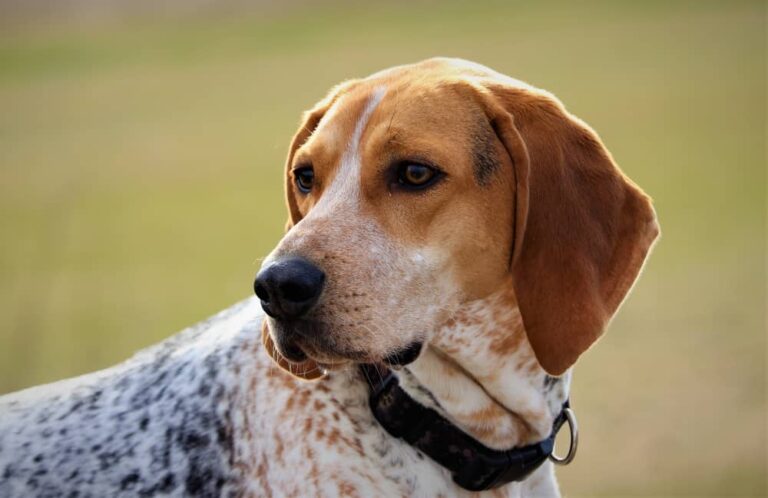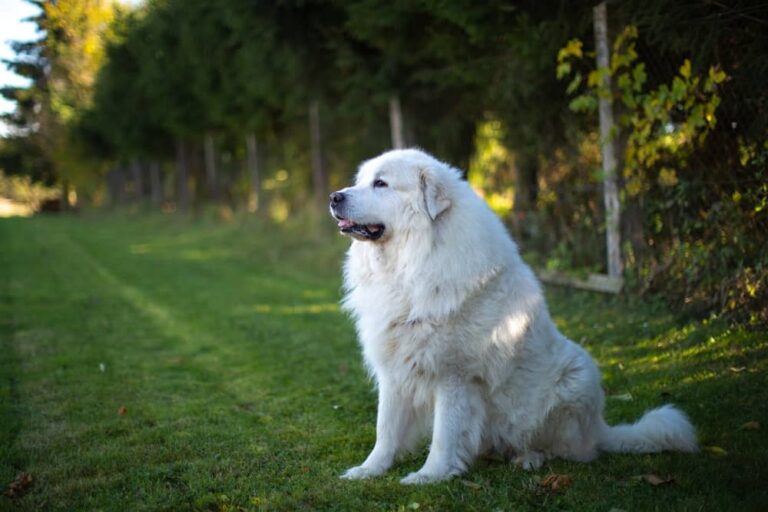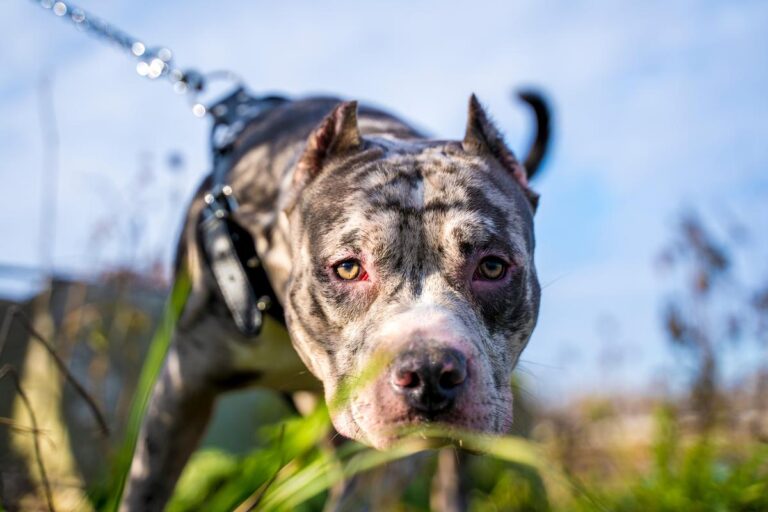Straight Hair Poodle: A Sleek and Elegant Breed
With their graceful demeanour and high intelligence, Poodles have stolen the affections of canine enthusiasts all over the globe. These dogs are recognized for their unique curly coats and always have an elegant look and allure.
However, amidst the world of curly haired poodles, a fascinating anomaly exists – straight haired poodles. In this article, let’s explore the fascinating world of poodles with naturally straight hair. We’ll also examine the various types of coats they can have.

We will explore the genetic factors influencing Straight Hair Poodle’s unique hair textures and learn how to distinguish them from their curly-coated counterparts. Grooming and maintenance tips are essential to ensure the well-being of straight and curly haired poodles.
Understanding Straight Hair Poodle Coat Types
Straight Hair Poodle’s stunning looks and diverse coat types captivate dog enthusiasts worldwide. As poodle puppies grow, they go through different stages of coat development before achieving their final coat type.
The Three Main Coat Types
straight hair poodles are known for having three main coat types, each distinct in appearance and texture:
- Curly Coat: The curly coat is the most well-known poodle coat. It is dense, tight, and often described as “corded.” The curls cover the poodle’s entire body, giving them a luxurious and regal appearance. This coat type requires regular grooming and maintenance to prevent matting and tangling.
- Corded Coat: The corded coat is a unique and eye-catching variation. This straight coat is smooth and sleek, unlike the curls seen in the other coat types. Straight haired poodles are considered an anomaly among the breed but are equally charming and beloved by their owners.
The Impact of Breed Standards on Poodle Appearance in Dog Shows
The breed standard is a blueprint for how a poodle should look, ensuring uniformity and preserving the breed’s distinct characteristics.
1. Size and Proportions: The breed standard specifies the acceptable height and weight ranges for each poodle variety, such as toy, miniature, and standard. It also details the ideal proportions and overall balance of the dog.
2. Head and Expression: The standard defines the desired head shape, muzzle length, and eye shape, contributing to the poodle’s intelligent and alert expression.
3. Body Structure: The breed standard outlines the correct body proportions, angles, and muscle development, ensuring a solid and elegant appearance.
4. Tail and Tailset: The standard specifies the correct tail carriage and tail set, which adds to the overall balance and harmony of the poodle’s silhouette.
| Breed Name | Straight Haired Poodles |
| Hair Texture | Smooth and sleek with no tight curls |
| Coat Shades | Various colors, including black, white, brown, gray, etc. |
| Grooming Needs | Generally easier to groom and maintain than curly coats |
| Temperament | Intelligent, affectionate, playful, and loyal |
| Grooming Comfort | May find grooming sessions more comfortable than curly-coated poodles |
| Potential Challenges | Less protection from sunburn and weather elements |
| Allergenic Properties | May be suitable for some allergy sufferers |
| Popularity | Relatively rare compared to curly-coated poodles |
Grooming and Maintenance
Grooming is crucial to caring for poodles, ensuring their coats remain healthy, clean, and free from common challenges like matting and tangling. Regular grooming not only enhances their appearance but also promotes their overall well-being.
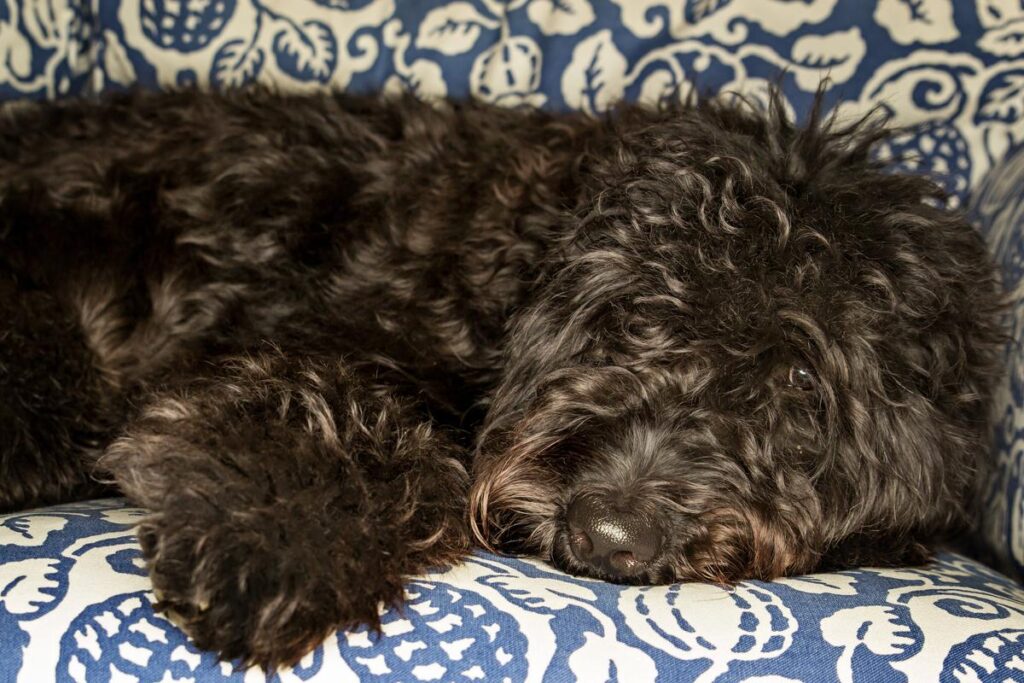
Addressing Common Grooming Challenges
1. Matting: Straight hair poodle coats are prone to matting, especially in curly and corded coat types. Matting occurs when loose hairs and tangles intertwine, forming tight knots in the coat. These mats can be uncomfortable for the poodle and may even cause skin irritation. It is essential to brush your poodle regularly, paying particular attention to areas prone to tangling, such as behind the ears and under the legs.
2. Tangling: Tangling can occur in all coat types but is more common in curly and corded coats. Regular brushing helps to prevent tangling and keeps the coat smooth and manageable. A high-quality slicker brush or a comb designed for poodle coats can effectively tackle tangles.
The Importance of Regular Grooming and Brushing
Regular grooming not only prevents matting and tangling but also offers several other benefits:
1. Coat Health: Grooming removes dirt, debris, and dead hair from the coat, promoting healthy skin and preventing skin issues.
2. Bonding Time: Grooming sessions provide an excellent opportunity for bonding with your poodle. Strengthening the emotional bond between you and your beloved pet can be helpful.
3. Early Detection of Issues: Regular grooming allows you to spot any potential health issues, such as skin irritations or lumps, at an early stage, enabling timely veterinary attention if necessary.
4. Shedding Control: While poodles are known for being hypoallergenic, regular brushing helps control shedding, reducing the amount of loose hair around the home.
Home Grooming vs. Professional Grooming
Both home grooming and professional grooming have their advantages:
Home Grooming:
- Cost-effective: Grooming your poodle at home can save you money in the long run.
- Bonding: Home grooming strengthens the bond between you and your pet.
- Convenience: You can groom your poodle at your own pace and according to your schedule.
Professional Grooming:
- Expertise: Professional groomers have the experience and knowledge to handle various coat types and styles.
- Time-saving: Professional grooming ensures a thorough and efficient grooming session.
- Styling Options: Professional groomers can create intricate and stylish cuts for your poodle.
Poodle Hair and Hypoallergenic Qualities
Poodles have gained popularity not only for their intelligence and elegance but also for their hypoallergenic qualities, making them a top choice for allergy sufferers. These unique attributes are necessary for minimal shedding and specific hair characteristics.

Why Poodles are Recommended for Allergy Sufferers
1. Low Dander Production: Allergies in dogs are often due to proteins found in a dog’s dander, saliva, and urine. Poodles, however, produce less dander compared to many other breeds.
2. Reduced Saliva Proteins: Another factor contributing to poodles’ hypoallergenic qualities is their reduced saliva protein production. While all dogs produce saliva proteins, some breeds produce more than others.
Minimal Shedding and Hypoallergenic Properties of Poodle Hair
1. Non-Shedding Coats: Straight hair poodle have a unique coat structure that makes them non-shedding or very low-shedding. Instead of shedding hair like many other breeds, poodles retain their hair within the coat, which means less hair release into the environment.
2. Single-Coat Structure: Poodle hair is also hypoallergenic due to its single-coat structure. Unlike some breeds with a double coat (undercoat and topcoat), poodles possess a single, dense, curly coat. This single coat does not trap allergens as effectively as a double coat, reducing the likelihood of triggering allergies.
Caring for Poodle Hair to Maintain Hypoallergenic Properties
To fully benefit from the hypoallergenic qualities of poodle hair, regular grooming and maintenance are crucial:
1. Frequent Brushing: Regular brushing helps remove loose hairs and dander from the coat, reducing the chances of allergic reactions. It also prevents matting and tangling, ensuring the coat remains healthy and clean.
2. Professional Grooming: Professional grooming sessions are essential, especially for poodles with curly or corded coats. Groomers use specific techniques to keep the coat in optimal condition and minimize dander release.
3. Regular Baths: Frequent baths using hypoallergenic shampoos help wash away allergens and keep the coat fresh and clean.
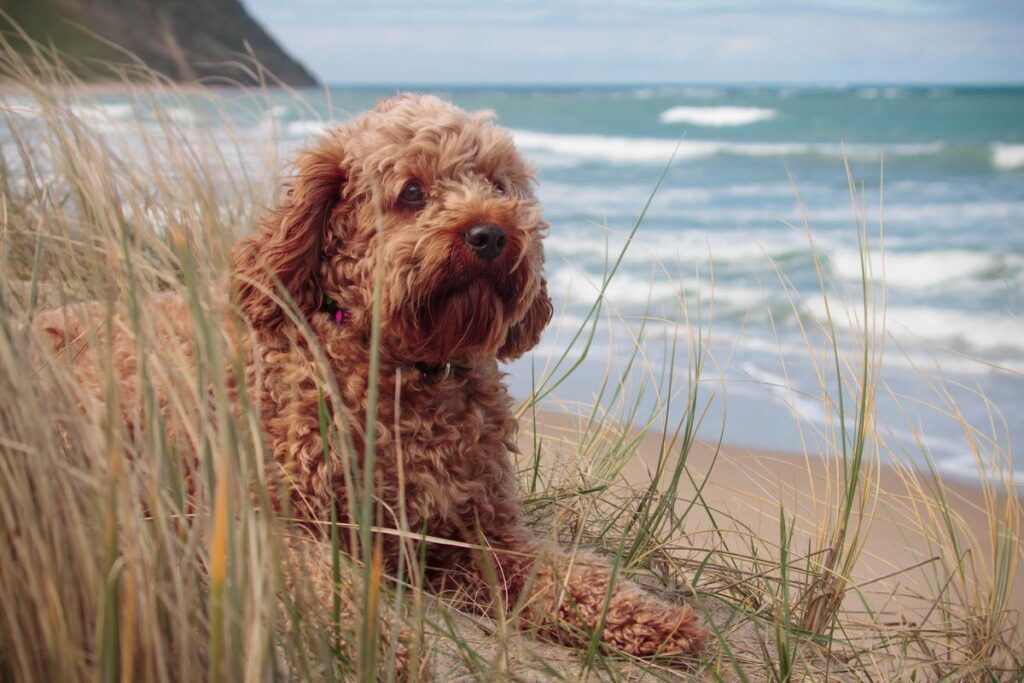
Straight Haired Poodles: Natural or Not?
The presence of straight haired poodles has long intrigued dog enthusiasts and experts alike. While poodles are renowned for their curly coats, straight hair among the breed raises questions about its origin and whether it is a natural trait.
Exploring the Possibility of Poodles Having Naturally Straight Hair
This straight hair does not result from grooming techniques or external interventions; it is an inherent genetic variation within the poodle gene pool.
The Role of Specific Genes in Straight Haired Poodles
Genetics is pivotal in determining whether a poodle’s coat type is curly or straight.
1. KRT71 Gene and Curly Coats: In poodles with curly coats, the KRT71 gene is typically responsible in a way that causes the hair shafts to form curls—this gene’s activity results in the characteristic tight and dense curls in curly coated poodles.
2. KRT71 Gene and Straight Coats: In straight haired poodles, the KRT71 gene is expressed differently, leading to the formation of hair shafts that are straight and smooth.
Can a Poodle’s Hair Change from Straight to Curly?
Generally, a poodle’s coat type is primarily determined by genetics and tends to remain relatively stable throughout its life. Poodle puppies are born with a soft and fluffy coat, an early indication of the adult coat type. As the puppy grows and matures, its coat texture becomes more apparent, and the actual coat type starts to emerge.
While it is rare for a poodle’s hair to change dramatically from straight to curly or vice versa, there are instances where the coat may undergo minor adjustments in texture. For example, some poodle puppies may initially have slightly straighter hair that becomes curlier as they mature.
Grooming Tips for Straight Haired Poodles
Grooming straight haired poodles require proper care and attention to keep their coats healthy, shiny, and tang-free. Follow this step-by-step guide to ensure your straight haired poodle looks and feels its best:
Also Read: Plot Hound Pitbull Mix – Ultimate Guide
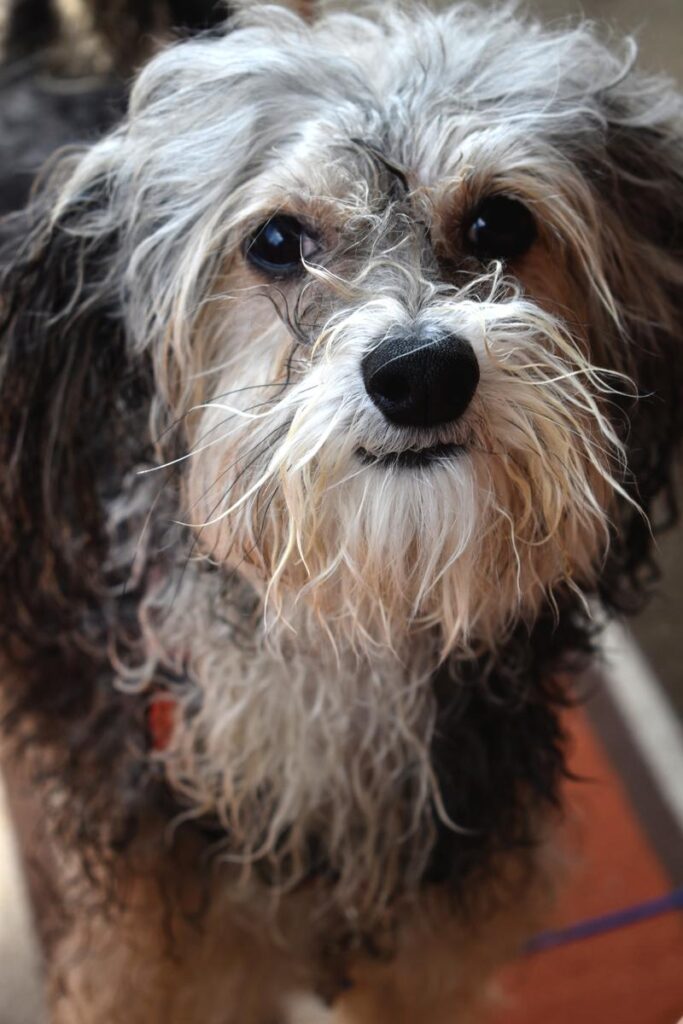
Step-by-Step Guide for Grooming Straight Haired Poodles
- Brush Regularly: Start by brushing your poodle’s coat regularly, at least twice to thrice weekly. To gently remove any loose hairs, debris, or tangles, it’s recommended to use either a slicker brush or a pin brush. Regular brushing prevents matting and keeps the coat smooth.
- Use a Detangling Spray: If you encounter any stubborn tangles, apply a detangling spray or conditioner to the affected areas. This helps ease the brushing process and minimizes discomfort for your poodle.
- Bathe as Needed: Straight haired poodles need not be bathed frequently unless they become dirty or develop an unpleasant odor. Use a mild, hypoallergenic dog shampoo when bathing to maintain the coat’s natural oils and prevent dryness.
- Trim as Necessary: Regularly trim your poodle’s coat to maintain a neat appearance. Focus on areas like the ears, paws, and tail, where the hair may grow longer than the rest of the body.
- Check Ears and Eyes: Pay attention to your poodle’s ears and eyes during grooming sessions. Clean the ears gently with a dog ear cleaner and inspect the eyes for any signs of irritation or discharge.
Tips and Products for Maintaining a Healthy and Shiny Coat
- Quality Grooming Tools: Invest in high-quality grooming tools, such as a slicker brush, pin brush, detangling spray, and nail clippers. These tools ensure efficient and gentle grooming sessions.
- Conditioning Treatments: Use a dog conditioner occasionally to keep the coat soft and shiny. Look for a conditioner formulated for straight haired poodles dogs to prevent product buildup.
- Nutritious Diet: A balanced and nutritious diet directly impacts your poodle’s coat health. Ensure your poodle receives the necessary vitamins and minerals through high-quality dog food.
- Omega-3 Fatty Acid Supplements: Omega-3 fatty acids contribute to healthy skin and a shiny coat. With your veterinarian’s approval, consider adding an omega-3 supplement to your poodle’s diet.
- Dog-Safe Grooming Products: Use grooming products specifically designed for dogs. Avoid using human hair products, which may not suit your poodle’s coat type.
Comparing Straight Haired and Curly Haired Poodles
Poodles come in two primary coat types: straight haired and curly haired. Each type has distinct hair texture, coat shades, and potential personality differences. Let’s explore the characteristics of both poodle types:
| Poodle Type | Grooming Comfort | Temperament |
| Straight Haired Poodles | Easier grooming experiences | Intelligent, affectionate, playful, loyal |
| Curly Haired Poodles | Require more frequent and careful grooming | Intelligent, affectionate, playful, hypoallergenic |
Personality Similarities:
- Both types share cleverness, playfulness, and affectionate nature, making poodles beloved family pets.
Final Verdict
In summary, straight haired poodles are a rare but natural occurrence within the breed. Genetics determine their sleek coats, adding diversity to the poodle family. Despite their unique appearance, they share the same intelligence and affection as their curly-coated counterparts, making them equally cherished in the dog world. Their charm and individuality continue to captivate dog enthusiasts worldwide.
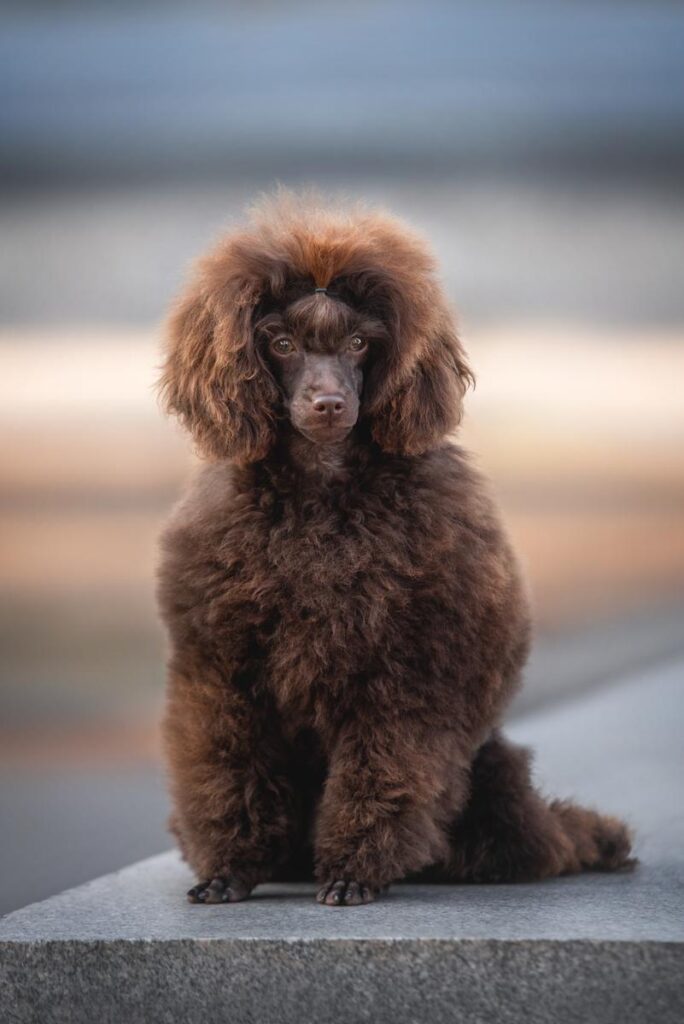
FAQS:
Q: Why Does My Poodle Have Straight Hair
A: Yes, poodles can grow their hair long and straight. Although the breed is typically associated with its curly coats, some poodles naturally have straight hair.
Q: Is keeping Poodle hair challenging?
A: Poodles shed, but because of their naturally curled fur, which holds shed hairs in place, they get as near to being hypoallergenic as a dog can.
Q: Do poodles have hair from birth?
A: Poodles have their puppy coat from birth. Frequently, this garment will feel and look very different from the coat an adult would wear. As opposed to the dense, curly coat of an adult Poodle, many of its puppies have relatively smooth, wavy hair.

